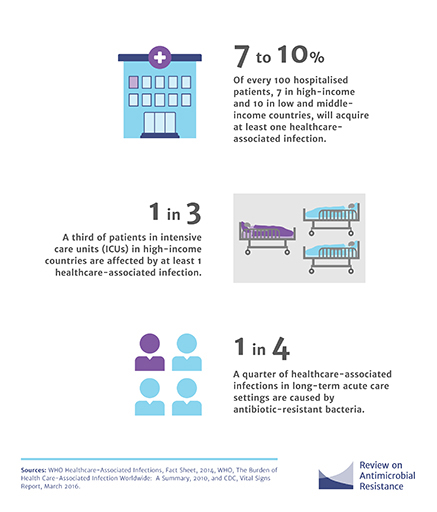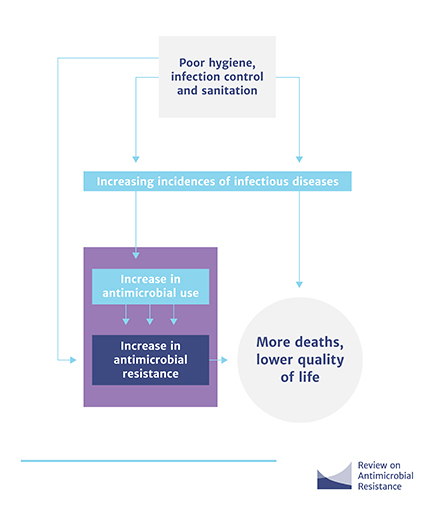3 Poor hygiene and infection control
Healthcare settings are hot spots for infectious diseases, including those caused by antibiotic-resistant bacteria (Figure 2).
Infections are spread through failures in hygiene, such as poor hand-washing technique, and because measures to prevent and control infections are inadequate or not followed consistently. Failure to wear protective clothing, to dispose of waste safely and to maintain a clean working environment all contribute to the spread of bacteria. You will learn more about the role of hygiene in preventing the spread of infections in Week 7.
A high number of cases of infectious diseases not only increases the demand for antibiotics and drives resistance but also increases mortality and has a negative impact on quality of life (Figure 3).


In the next section, you will explore the link between the overuse of antibiotics and resistance.
